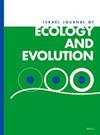Comparative mitochondrial phylogeography of two legless lizards (Pygopodidae) from Queensland’s fragmented woodlands
IF 0.8
4区 环境科学与生态学
Q3 ECOLOGY
引用次数: 2
Abstract
Sclerophyll woodlands and open forests once covered vast areas of eastern Australia, but have been greatly fragmented and reduced in extent since European settlement. The biogeographic and evolutionary history of the biota of eastern Australia’s woodlands also remains poorly known, especially when compared to rainforests to the east, or the arid biome to the west. Here we present an analysis of patterns of mitochondrial genetic diversity in two species of Pygopodid geckos with distributions centred on the Brigalow Belt Bioregion of eastern Queensland. One moderately large and semi-arboreal species, Paradelma orientalis, shows low genetic diversity and no clear geographic structuring across its wide range. In contrast a small and semi-fossorial species, Delma torquata, consists of two moderately divergent clades, one from the ranges and upland of coastal areas of south-east Queensland, and other centred in upland areas further inland. These data point to varying histories of geneflow and refugial persistance in eastern Australia’s vast but now fragmented open woodlands. The Carnarvon Ranges of central Queensland are also highlighted as a zone of persistence for cool and/or wet-adapted taxa, however the evolutionary history and divergence of most outlying populations in these mountains remains unstudied.昆士兰零散林地中两种无腿蜥蜴(Pygopodidae)的线粒体系统学比较
硬核植物林地和开放森林曾经覆盖了澳大利亚东部的大片地区,但自欧洲人定居以来,这些林地和森林已被大大分割和缩小。澳大利亚东部林地生物群的生物地理和进化史也鲜为人知,尤其是与东部的雨林或西部的干旱生物群相比。在这里,我们对两种分布在昆士兰东部布里加洛带生物区的Pygopodid壁虎的线粒体遗传多样性模式进行了分析。一个中等大小的半树栖物种,Paradelma orientalis,遗传多样性较低,在其广泛的范围内没有明确的地理结构。相比之下,一个小型半化石物种Delma torquata由两个适度分化的分支组成,一个来自昆士兰东南部沿海地区的山脉和高地,另一个集中在内陆的高地地区。这些数据表明,在澳大利亚东部广阔但现在支离破碎的开阔林地,基因流动和避难所持续存在的历史各不相同。昆士兰中部的卡纳文山脉也被强调为凉爽和/或潮湿适应类群的持续存在区,但这些山脉中大多数偏远种群的进化史和分化仍有待研究。
本文章由计算机程序翻译,如有差异,请以英文原文为准。
求助全文
约1分钟内获得全文
求助全文
来源期刊

Israel Journal of Ecology & Evolution
环境科学-进化生物学
CiteScore
2.10
自引率
0.00%
发文量
7
审稿时长
>36 weeks
期刊介绍:
The Israel Journal of Ecology and Evolution includes high-quality original research and review papers that advance our knowledge and understanding of the function, diversity, abundance, distribution, and evolution of organisms. We give equal consideration to all submissions regardless of geography.
 求助内容:
求助内容: 应助结果提醒方式:
应助结果提醒方式:


